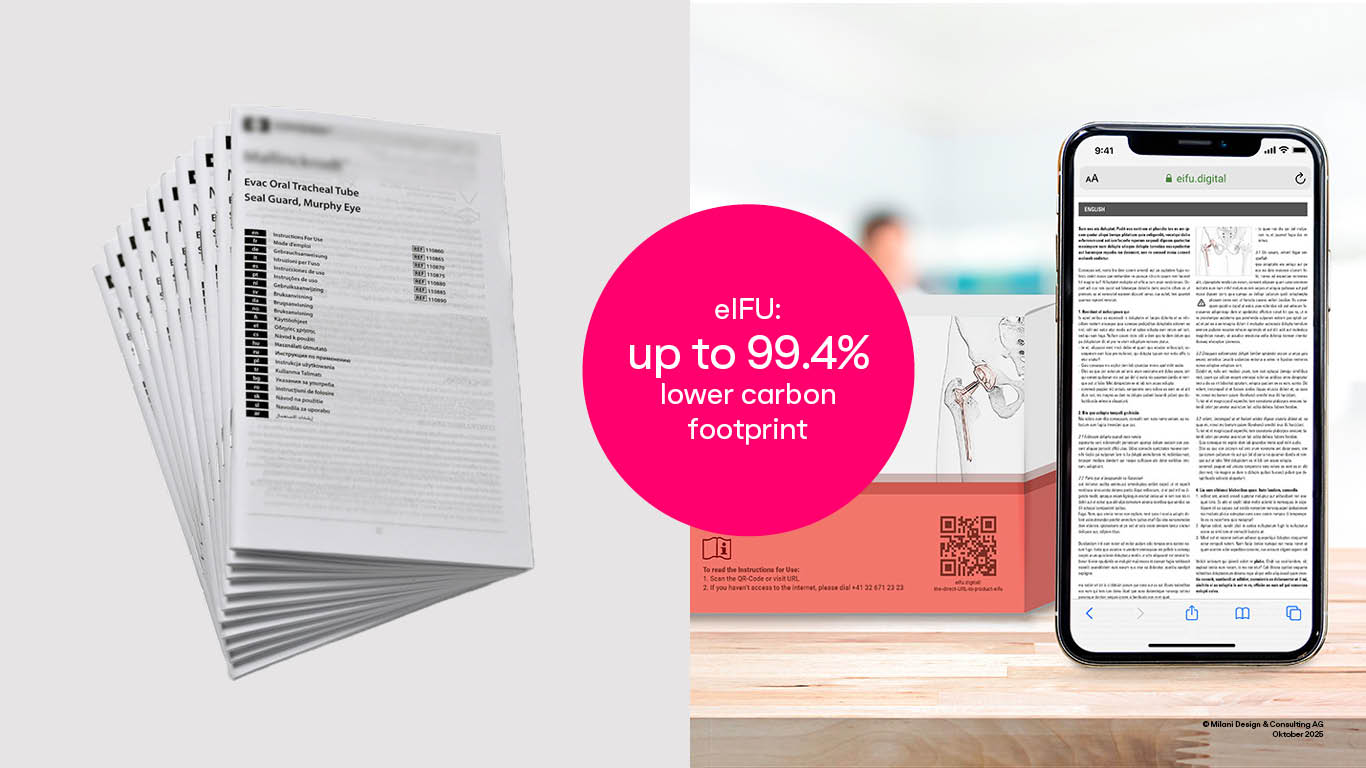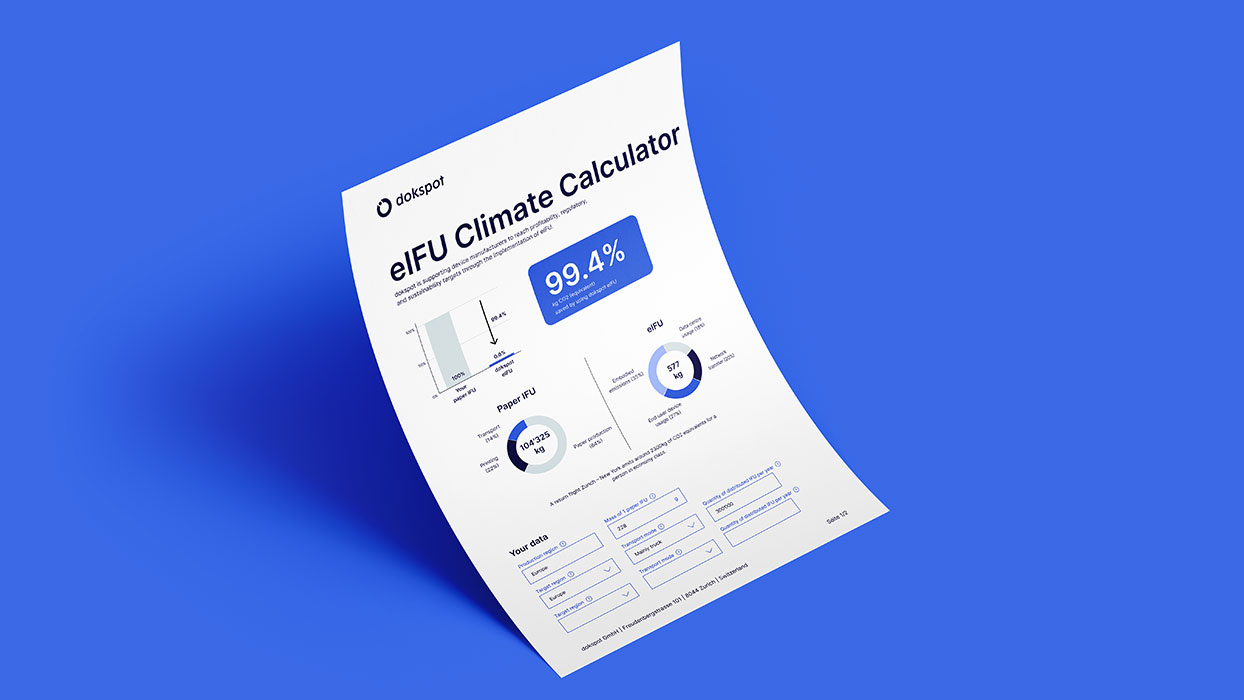How dokspot and Milani Make the Environmental Impact of IFUs Transparent
Printed instructions for use (IFUs) are still the norm in the medical device industry. They fill boxes, pile up in warehouses, and burden the environment. With regulatory changes on the horizon and growing sustainability demands, one central question arose for dokspot, the leading provider of eIFU solutions: Are electronic IFUs truly the better choice? Together with Milani, the company developed a life cycle assessment that provides answers and a tool that turns data into strategic arguments.
IFUs in Transition: Focus on Sustainability and Regulation
Printed package inserts and manuals, known as IFUs (Instructions for Use), accompany medical devices and products across hundreds of pages. They generate printing, packaging, and storage costs, while also harming the environment when hospitals and other facilities dispose of them after use. At the same time, pressure is growing on manufacturers to disclose their environmental footprint and implement measurable improvements.
A shift is now underway. In June 2025, the European Commission extended the use of electronic IFUs (eIFUs) for professional users to cover all medical devices and accessories. Yet one decisive question remained unanswered for many manufacturers: Beyond improved usability and cost benefits, are eIFUs truly more sustainable? That uncertainty became the starting point for dokspot’s joint project with Milani.

Life Cycle Assessment: Paper vs. Digital
Milani analyzed the entire life cycle of paper-based IFUs compared with dokspot’s electronic solution – from paper production, printing, and logistics to server operation, network usage, and the embedded energy of end devices. The analysis was based on publicly available, scientifically validated data. The result is clear: switching to eIFUs reduces CO₂ emissions by an average of around 90 percent. While the exact savings depend on factors such as data volume or transport routes, even conservative scenarios show digital solutions to be significantly less carbon-intensive.
The analysis revealed that paper-based IFUs contribute heavily to greenhouse gas emissions through material use, printing, and transport. For electronic solutions, the main environmental impacts are tied to server operations, network usage, and the embedded energy of end devices.
From Data to Decision-Making: dokspot’s New Calculation Tool
Building on this analysis, Milani developed a web-based calculation tool for dokspot’s website. With just a few steps, companies can simulate how much CO₂ they could save by switching to eIFUs. From complex life cycle data, we created a practical tool that makes ecological benefits easy to understand and serves as a strategic decision-making aid in customer interactions.

Milani services:
- Life Cycle Assessment (LCA)
- Design concept and web tool prototype
- User Experience Design


